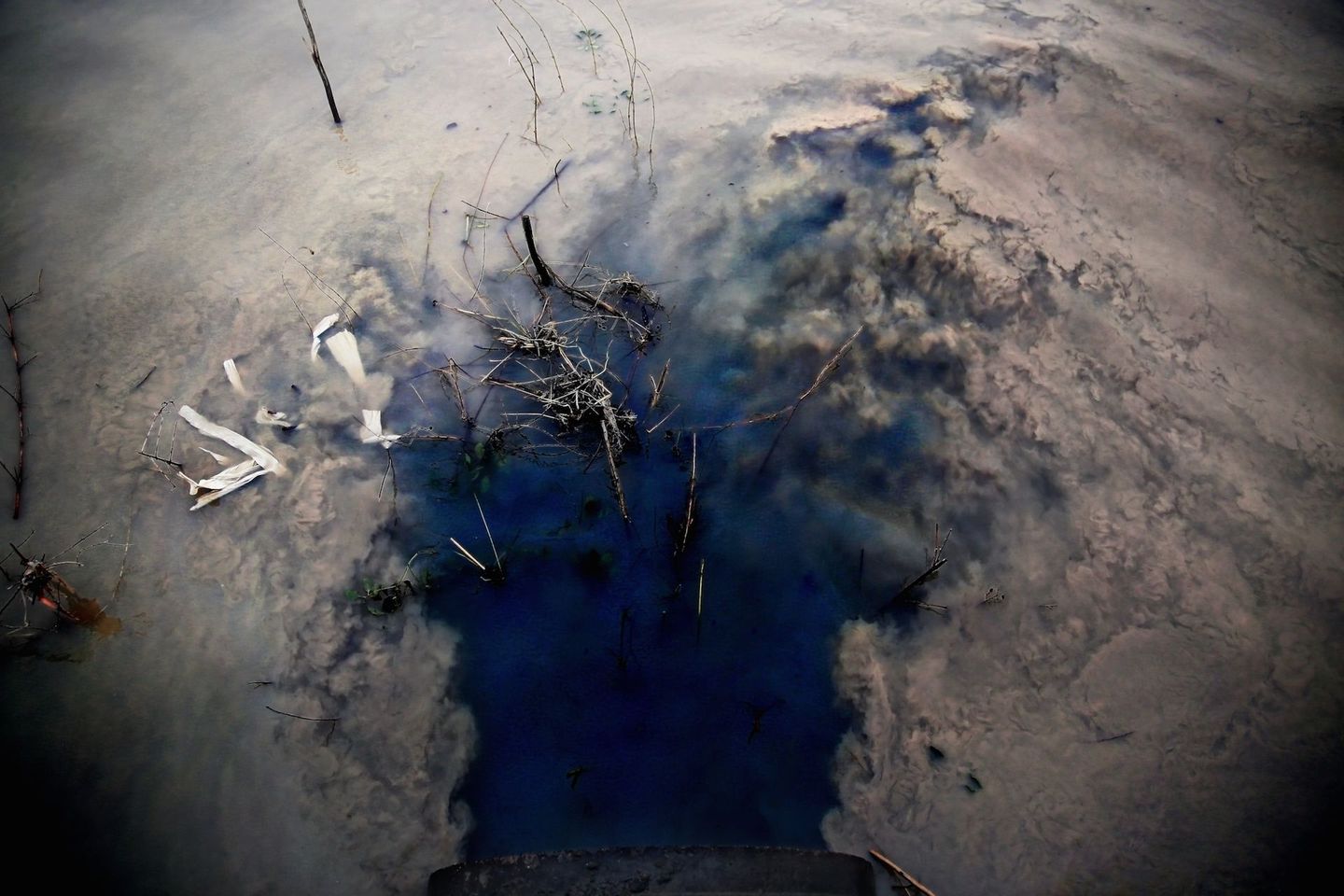Photo: wornthrough.com
Fact: ardent followers of fashion aren’t always that ardent about sustainability. Also a fact: it can take up to 2,700 litres to produce the cotton needed to make a just a single t-shirt, which is the equivalent of three years worth of drinking water. And that’s what really had us when we sat down with the WWF to talk about why the fashion industry is the second-largest polluter after the oil industry as part of our collaborative Zero Waste Program.
If you recall the last time you cleaned out your closet, what did you notice? For us, it was quite the accumulation of random t-shirts. Stacks and stacks of t-shirts. Basics from Madewell and J. Crew. Really nice ones from Splendid, Wang and James Perse. The odd Gap or three. Then, the novelty t-shirts. Slogan t-shirts. T-shirts from charity days, marathons, and other athletic events. A t-shirt from a group travel experience. An old concert. It was astonishing how many t-shirts we’re all sitting on considering how many people in the world still don’t have drinking water. Just imagine what it would be like to feel very thirsty and not have access to water. Now think of the t-shirts.
Here is a further look into the issues surrounding fashion and water, and the three other reasons why fashion is the world's second-largest polluter.
Photo: tdsblog.com
1. USE OF WATER
The fashion industry is a huge consumer as well as a polluter of fresh water, with one of the biggest culprits being cotton production.
Fresh water is an essential ingredient in the cultivation of cotton, which is used in nearly 40% of clothing. According to The Global Leadership Award in Sustainable Apparel (GLASA), one kilogram of textile material requires approximately 100 – 150 litres of water. (That’s over 600 glasses of water). To make matters worse, each year the apparel industry dyes around 28 billion kilograms of textiles. In order to do this, they use over five trillion litres of water, which is the equivalent of two million Olympic-sized swimming pools. Then you have to take into consideration that consumers will have to launder all this apparel, which is estimated at about 1650 litres of water per one kilogram washed.
The vast amounts of water needed can have a devastating effect on the environment. One of the most extreme examples occurred when two Central Asian rivers were diverted from the Aral Sea to provide irrigation for cotton production in Uzbekistan and Turkmenistan. In the 1970s the Aral Sea was the fourth largest lake in the world, but it now covers just 10% of its former area, resulting in the loss of the fisheries and communities that relied heavily on the lake for their livelihoods and very existence. The damage has been extreme. In 2011, floods in Thailand forced Intel to cut its revenue forecast by $1bn, and Gap was forced to cut its profit forecast by 22% after drought cut into the cotton crop in Texas.
Cotton is also one of the most chemically dependent crops. The industry relies on significant amounts of insecticides and herbicides that wash into the waterways resulting in the pollution of soils and waters, which poses a threat not only to ecosystems but also to human health.
The manufacturing process also contributes to the fashion industry's poor water record, and It is estimated that around 20% of the world’s industrial water pollution comes from the treatment and dying of textiles.
Photo: ipsnews.com
2. CARBON FOOTPRINT
The fashion industry is a primary source of greenhouse gas emissions. It accounts for 10% of carbon emissions globally, the result of its long and varied supply chains, production processes, manufacturing, shipping and retail activities.
Globalization means that not only may clothes have travelled across the world on a ship powered by fossil fuels, but that the production of a single garment is now likely to involve several different countries. For example, cotton picked in the US is sent to a factory in Bangladesh, before being delivered to its retailer in Germany.
The advent of fast fashion has only contributed to the already negative impact the industry has on the environment. The rate of production and throwaway nature of its lower-cost garments generates over 400% more carbon emissions per item per year than other more durable items of clothing.Cheap synthetic fibres also emit gasses like N2O, which is 300 times more damaging than CO2.
Photo: ecouterre.com
3. DYES
The global textile industry discharges 40,000 – 50,000 tons of dye into the water system, which contributes to an estimated 17 to 20% of the world’s industrial water pollution.
Given that textile-dyeing facilities tend to be located in developing countries, where regulations are lax and labor costs are low, untreated wastewater is often discharged into nearby rivers, which in turn finds its way into the world’s seas and oceans.
The Citarum River in Indonesia is one of the most heavily polluted in the world, due to the hundreds of textile factories that line its riverbanks.
4. FASHION WASTE
The increase in the amount of clothing we now purchase has far-reaching consequences for the environment. And according to recent statistics, we now buy 40% of all our clothes at value retailers, with just 17% of our clothing budget, the advent of so-called fast fashion resulting in more garments being shipped and flown from east Asia than ever before.
The lifecycle of these clothes is also decreasing, and it is estimated by wasteonline.org.uk that more than 1 million tonnes of textiles are thrown away each year.
In the UK, only around 15% of unwanted clothes are donated or recycled, with the balance – 85% – ending up in landfills.
Approximately 80% of landfill ends up being incinerated, which consumes energy, the balance decomposes organically which releases methane, a gas 20 times more powerful than CO in terms of climate change.
Stay tuned as we tackle each issue in more depth in the coming weeks and outline potential solutions.





